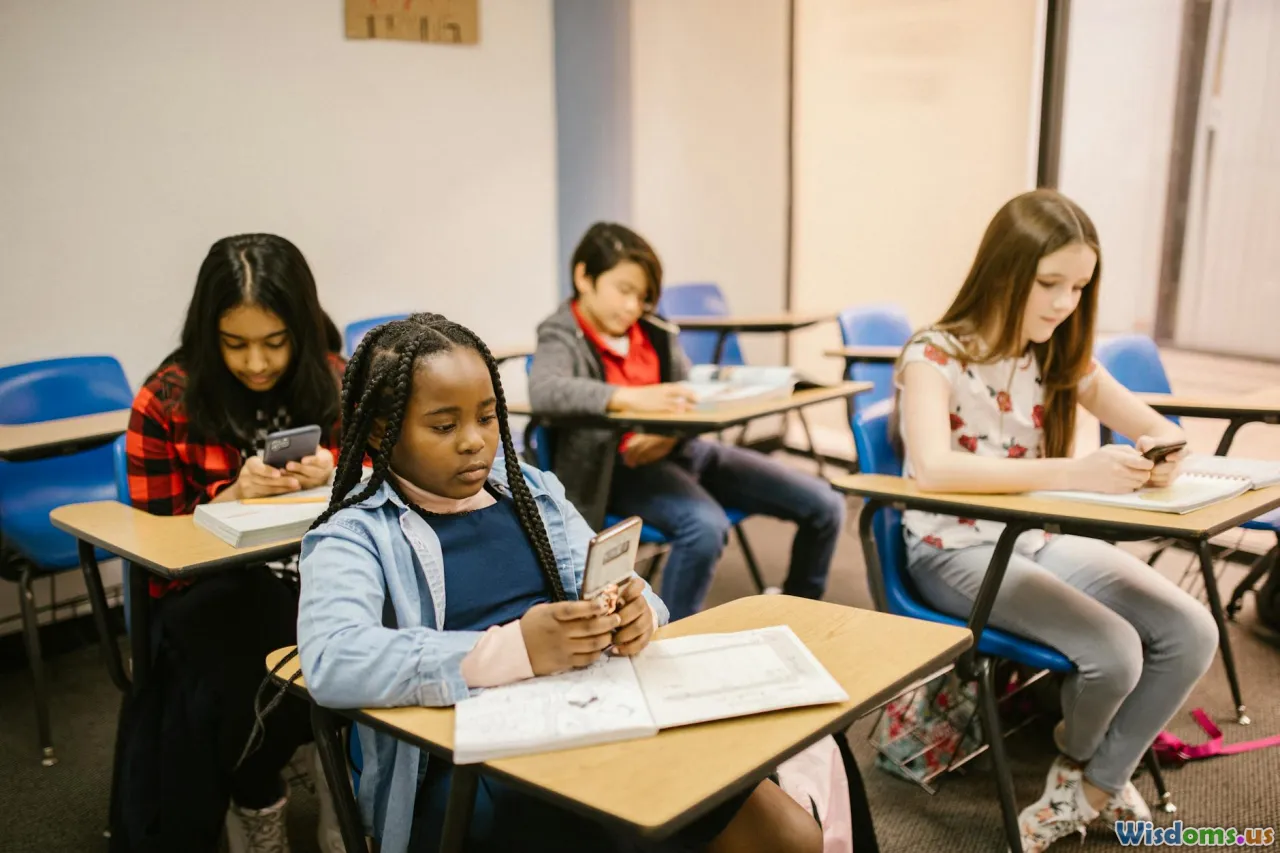
Should Kids Bring Smartphones to Class The Debate Explained
8 min read A deep dive into whether kids should bring smartphones to class, examining benefits, challenges, and educational impact. (0 Reviews)
Should Kids Bring Smartphones to Class? The Debate Explained
In today’s hyper-connected world, the smartphone is the quintessential companion — for adults and kids alike. Yet, in classrooms around the globe, the question of whether children should bring their own smartphones to class sparks impassioned debate among educators, parents, and policy makers. Smartphones can serve as powerful educational tools, granting instant access to information and apps that can enrich learning experiences. However, they also pose significant challenges related to distraction, social interaction, and equity. This article unpacks the nuances behind this debate, weaving together studies, expert opinions, and real-world examples to offer a comprehensive guide for anyone grappling with this modern dilemma.
The Educational Potential of Smartphones in Class
Access to a World of Knowledge
Smartphones provide immediate access to vast resources — online encyclopedias, educational videos, interactive quizzes, language translation apps, and more. An example can be seen in Singapore’s education system, where students in certain secondary schools use smartphones during lessons to research information quickly and collaborate on digital platforms. This connectivity promotes self-directed learning beyond textbook confines.
Personalized and Adaptive Learning
Apps tailored to individual students' learning paces and styles can transform the classroom experience. For example, programs like Khan Academy and Duolingo offer adaptive learning that adjusts difficulty based on performance metrics. When teachers integrate such tools with smartphones, they can foster a more inclusive environment, helping students who may pace differently from the class average.
Enhanced Engagement and Motivation
For tech-native students, smartphones can boost engagement. Gamification apps and educational social platforms tap into children’s love for technology. A study published by the Pew Research Center (2019) noted that 95% of teens find smartphones help them connect with information and peers in ways previously impossible, potentially translating into greater interest during lessons.
The Challenges and Risks
Distraction and Reduced Focus
The flip side of connectivity is distraction. Notifications, social media, and games compete relentlessly with academic content for students’ attention. The incidence of “phone addiction” is rising—research from the University of Chicago (2020) correlated smartphone use in classrooms with declines in test scores, especially when phones were not regulated during class.
Inequality and Access Issues
Not every student owns a smartphone or one with equal capabilities, which can widen the digital divide. A 2022 National Center for Education Statistics report indicated that approximately 15% of U.S. children lacked regular access to a high-speed internet-connected device. Schools must therefore be cautious about prescribing smartphone use without alternative provisions for less privileged students.
Social and Psychological Concerns
There’s evidence that excessive smartphone use may impair social skills and increase anxiety or cyberbullying. Teachers in some schools report that smartphones exacerbate classroom conflicts or cause feelings of exclusion among students not active on social media. The presence of a device can subtly shift classroom dynamics.
Real-World Policies and Approaches
Complete Smartphone Bans
Some schools, like several in France, have imposed bans on smartphones during school hours. French legislation in 2018 prohibits smartphone use for students up to age 15 during school time, aiming to protect focus and social interaction. While these bans eliminate distractions, they also restrict potential educational applications.
Controlled Use and Integration
Other schools take a middle path, allowing smartphones but enforcing strict usage policies. For instance, the American private school BASIS.ed incorporates smartphones as learning tools but only during designated activities. Teachers monitor use closely, ensuring phones supplement rather than supplant traditional learning.
Digital Citizenship Education
An emerging trend is educating students on responsible smartphone use alongside permitting devices. Programs teach digital etiquette, balance, and self-regulation. This approach recognizes that smartphones are now integral rather than external to daily education.
Insights from Educators and Students
Dr. Maria Sanchez, an education technology expert, observes, “Smartphones, if harnessed properly, can democratize knowledge and make lessons more interactive. However, schools must provide clear boundaries and support structures for effective integration.”
High school senior Liam Issac shared, “When our teachers use phones in lessons – like scanning QR codes for quizzes or accessing interactive polls – it makes learning more relatable. But distractions happen if rules aren’t enforced.”
These voices underscore the complex dual nature of smartphones in classrooms.
Looking Forward: A Balanced Path
Given the advantages and pitfalls, the ideal approach lies in balance: leveraging the educational benefits of smartphones while instituting firm policies to mitigate distractions and inequities.
-
Infrastructure Investment: Schools need to ensure broad access to adequate devices and reliable internet.
-
Teacher Training: Educators require training to design smartphone-integrated lesson plans and manage classroom dynamics.
-
Parental Involvement: Parents should be engaged partners, reinforcing responsible smartphone use habits at home.
-
Student Empowerment: Encouraging students to understand and self-manage technology use builds lifelong skills.
Ultimately, whether kids should bring smartphones to class may depend on the school’s context, resources, culture, and readiness rather than a one-size-fits-all decision.
Conclusion
The debate about kids bringing smartphones to class is far from settled. Smartphones bring incredible capacity for enriching education but come bundled with distractions and social challenges. With thoughtful policies, digital literacy education, and inclusive access strategies, schools can harness the power of smartphones to prepare children for the tech-infused world they inhabit. Dismissing or banning these devices outright risks ignoring a vital tool of contemporary learning, whereas embracing them recklessly could undermine educational goals. As we navigate this nuanced terrain, stakeholders must collaborate to strike the right balance — crafting classroom environments where smartphones become instruments of learning rather than distractions from it.
The future of education will increasingly intertwine with technology, and thoughtfully integrating smartphones is an essential step on that journey.
References:
- Pew Research Center. (2019). Teens' Social Media Use and Its Impact.
- National Center for Education Statistics. (2022). Access to Digital Learning Devices.
- University of Chicago. (2020). Impact of Classroom Smartphone Use on Academic Performance.
- French Government Education Act, 2018.
Rate the Post
User Reviews
Popular Posts





















